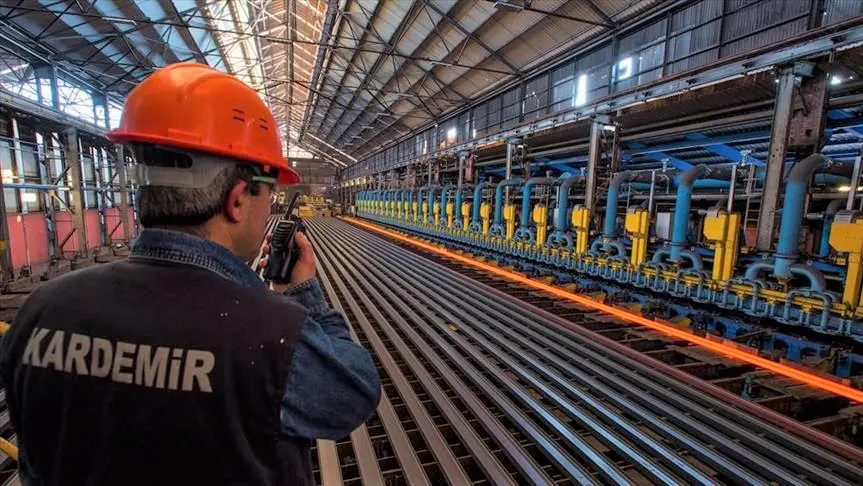The final crude steel figures for 2019 show a 3.4% increase in global output – but the only growth was in Asia and the Middle East. The latest annual report from the Bureau of International Recycling also shows a similar increase in the use of steel scrap as a raw material.
The report has been compiled by Rolf Willeke, statistics advisor of BIR’s ferrous division, who intends to produce quarterly updates in future for more accurate appraisals of the market.Using the latest worldsteel data, Willeke reports that global crude steel production in 2019 was 1.870 billion tonnes, 3.4% up on the previous year. Worldwide oxygen furnace production increased by 6.5% to 1.343 billion tonnes while the global electric furnace total was virtually unchanged at 523 million tonnes. In 2019, the amount of steel scrap used by key countries and regions also increased 3.4% to 491 million tonnes.
China to the fore
China continues to be the world’s largest consumer of steel scrap – the country’s annual consumption soared 15% last year to 215.93 million tonnes. ‘The increase was mainly due higher pollutant emission standards for the Chinese steel industry,’ says Willeke. ‘BOF mills have actively increased scrap inputs and their steel scrap/crude steel ratio is currently said to be 20.2%.’
The use of steel scrap increased last year in the USA (up 1% to 60.7 million tonnes) but there were falls in the EU (-3.7%), Japan (-7.7%), Russia (-4.3%), South Korea (-4.7%), Turkey (-10.9%) and Canada (-5.8%).
Willeke adds: ‘Our figures provide an excellent basis for a worldwide estimate of steel scrap usage. Like worldsteel, we calculate that 630 million tonnes of steel scrap are recycled every year, saving around 950 million tonnes of CO2 emissions annually – a figure greater than the CO2 emissions of the entire EU transportation sector. Besides this significant reduction in greenhouse gas emissions, it should also be highlighted that steel recycling saves energy and conserves natural resources, thus making a decisive contribution to climate protection.’
Turkey remains biggest importer
Last year Turkey’s overseas steel scrap purchases fell 8.7% to 18.857 million tonnes, although Turkey remains the world’s biggest steel scrap importer. Its main supplier was the USA (up 3.6% to 3.838 million tonnes). India reinforced its position as the world’s second-largest steel scrap importer with an 11.4% increase in its overseas steel scrap purchases to 7.053 million tonnes. The country’s main supplier was the UK (up 25.3% to 0.869 million tonnes). Third-placed South Korea upped its scrap imports by 1.6% to 6.495 million tonnes, with Japan the main supplier (down 0.6% to 4.017 million tonnes). Malaysia reported a remarkable 56.3% increase while those with double-digit declines included the USA (-15.1%), Pakistan (-13.5%), Canada (-38.7%) and Belarus (-14.5%).
Scrap exports
The EU remained the world’s leading steel scrap exporter last year, upping its shipments by 0.6% to 21.793 million tonnes. Its major buyer was Turkey, although the total fell 0.7% to 12.021 million tonnes. Last year brought an increase in US overseas steel scrap shipments of 2% to 17.685 million tonnes with Turkey the leading buyer (+14.1% to 3.916 million tonnes). A 27.4% decline in Russia’s outbound shipments last year reflected the government’s decision to restrict steel scrap exports through quotas from the end of August 2019.
Don't hesitate to contact us to share your input and ideas. Subscribe to the magazine or (free) newsletter.



